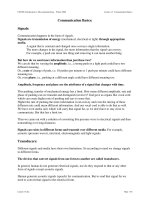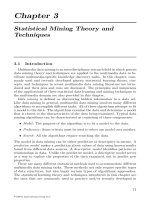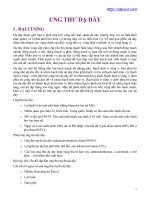Tài liệu Studies in Legal History pdf
Bạn đang xem bản rút gọn của tài liệu. Xem và tải ngay bản đầy đủ của tài liệu tại đây (899.59 KB, 345 trang )
Selling the Church
studies in legal history
Published by the University of North Carolina Press
in association with the American Society for Legal History
Thomas A. Green and Hendrik Hartog, editors
robert c. palmer
we
Selling the Church
The English Parish in Law,
Commerce, and Religion,
1350–1550
The University of North Carolina Press
Chapel Hill and London
∫ 2002 The University of North Carolina Press
All rights reserved
we
Publication of this work was made possible in part
through a grant from the Joseph H. Smith Memorial Publication
Fund of the American Society for Legal History.
Designed by Heidi Perov
Set in Centaur and Goudy Text by Keystone Typesetting, Inc.
Manufactured in the United States of America
The paper in this book meets the guidelines for permanence
and durability of the Committee on Production Guidelines for
Book Longevity of the Council on Library Resources.
Library of Congress Cataloging-in-Publication Data
Palmer, Robert C., 1947–
Selling the church : the English parish in law, commerce,
and religion, 1350–1550 / Robert C. Palmer.
p. cm. — (Studies in legal history)
Includes bibliographical references and index.
isbn 0-8078-2743-6 (alk. paper)
1. Church and state—England—History. 2. Parishes—England—
History. 3. Leases—England—History. 4. Benefices, Ecclesiastical—
England—History. 5. Reformation—England. I. Title. II. Series.
kd8700 .p35 2002
274.2%05—dc21 2002003831
0605040302 54321
to s. f. c. milsom
4
contents
1
Acknowledgments xi
Introduction 1
one. The Parish as a Governed Community 10
two. The Parish as a Commercial Entity 30
three. The Common Law and the Mundane Church 48
four. Parish Leases: The Practice 75
five. Parish Leases: Conflicts and Consequences 112
six. Reforming the Parish by Statute 143
seven. Enforcing the Statutes of 1529 173
eight. The Dissolution of the Religious Houses 209
conclusion. Conceiving the Reformation 247
appendix 1. Baili√ Style of Parish Management 255
appendix 2. Incidence of Nonparish Leaseholds in Common Pleas 259
appendix 3. Parish Leases from the Plea Rolls 263
appendix 4. Enforcement Suits under the Statutes of 1529 274
appendix 5. Request of a Feo√ee 307
appendix 6. Premunire 310
Bibliography 313
Index 319
4
tables and figures
1
Tables
1. Statutory Penalties 167
2. Geographical Distribution: Enforcement of the Statutes Compared
to Ordinary Litigation in the Court of Common Pleas 187
3. Distribution of Enforcement Suit Subject Matter 188
Figures
1. Parish Baili√s in Account Cases 78
2. Leases Granted by Religious Corporations, ca. 1400 88
3. Leases Granted by Religious Corporations, ca. 1500 88
4. Parish Leases Made by Noncorporate Clerics, ca. 1400 89
5. Parish Leases Made by Noncorporate Clerics, ca. 1500 89
6. Enforcement Litigation, 1530-m to 1536-h 175
7. Enforcement of the 1529 Statutes: The Exchequer 177
8. Attorney General Management of 1529 Statutory
Enforcement Cases 180
9. Clerical (Noninstitutional) Plainti√s in
Common Pleas 253
4
acknowledgments
1
I have accumulated the usual academic debts in writing this book, but par-
ticularly to the sta√ of the Public Record O≈ce and to Tom Green, who has
administered encouragement and criticism in equal doses. The personal debts,
however, are just as significant. I wrote this book while I was participating in a
restructuring of the University of Houston; I was president of the U.H. Faculty
Senate in 1998. Intense participation in academic politics and working on the
book thus exacted a double cost on my children, who were then adolescents. My
gratitude to my wife, Patricia Rochford Palmer, and to my children, Ned and
Elspeth, is thus all the more heartfelt, and I hope eventually they come to think
this product worth the time I invested in it. I have dedicated the book to
Professor S. F. C. Milsom, whom I first met in 1973 at a seminar at the Institute
for Historical Research. His jurisprudential perspective has served me as a
constant inspiration to search out the conceptual orientations in legal history.
Selling the Church
4
introduction
1
F
rom 1529 to 1540 Henry VIII reformed the English parish from a
commercial enterprise into a pastoral institution; in the process he
reformed and transformed English society. This reformation concen-
trated on the parish, not on the forms of popular piety, the doctrine of
transubstantiation, or the relationship of works or faith to individual salvation.
For more than a century and a half before 1529, the parish had been a subject of
commerce. Rectors and perpetual vicars leased out their parishes as well as their
tithes. Often thus absent, they could avoid their parishioners and improve their
standard of living by pursuing education, engaging in administration, taking a
di√erent ecclesiastical position, following their own interests. Chaplains, the
poorest and least educated of the clergy, were the curates who cared for parish
needs; and they were often hired by lay lessees. Henry VIII transformed that
kind of clergy and parish in 1529. By statutory action the revenue from the
parish increasingly from 1529 to 1540 commanded the presence of the rector
himself; thus a more educated, substantial clergyman was present in the parish.
Parishioners found themselves suddenly armed with new mechanisms for en-
forcing late medieval clerical ideals. These mechanisms radically altered tradi-
tional allocations of social power. The parish under Henry VIII became an
organization more oriented to spiritual needs and more regulated by the crown.
The complex of changes involved a reordering not only of power relations
between laity and clergy, but also of the context for parish life: the handling of
and control over much of the agricultural surplus of England, the means
available for managing and exploiting land, the avenues available for pursuing
spiritual ends. These changes amounted to a transformation of rural and urban
communities in every county of England.
The decade after 1529 required a redefinition of the patterns of life, and that
redefinition merged the national and the local in intricate ways. At the national
level the fall of Cardinal Wolsey, the rise of Thomas Cromwell, Henry VIII’s
divorce and his marriage to Anne Boleyn, and the king’s assumption of the
headship of the church all indicated an assertive monarchy that was completing
[2] introduction
the assumption of the comprehensive, self-confident governmental power be-
gun after the Black Death of 1348. Those same events also symbolized the
transformation of life taking place in the locality. Bishops found themselves
completely subordinated to the crown, but in a better position to regulate
parish life. Inserting the rector back into the parish altered the economic,
educational, and religious context of parish life. The rector’s wealth and educa-
tion became critical elements in many parishes. The dynamics of parish life,
however, now included parishioners who had been statutorily empowered to
supervise their clerics to ensure their residence in the parish and to keep them
from engaging in commercial activity. Moreover, the monasteries and religious
houses rapidly disappeared from the countryside; people had to view their
religious life and the clerical order di√erently. Personal conflicts and varied
traditions shaped the changes in di√erent ways in each parish. No matter how
idiosyncratic the local relationships were, however, the context of parish life was
one set by the institutionalized rules of the church and the state; those rules
changed rapidly after 1529. The events around the king necessarily reverberated
in mundane parish life.
Law wove the local situation together with the events instituted in London
and Westminster. In some ways over the preceding century and a half, the
English government had progressively undermined the capacity of the church to
regulate social behavior. After 1348 and the death of upwards of a third of the
English population, the king’s government had increasingly accepted respon-
sibility for the workings of society.
∞
National governance of localities came
primarily through the law courts, both the courts of common law and soon also
the more expeditious prerogative courts. The prerogative courts—most impor-
tantly, chancery and king’s council or star chamber—were usually most e√ective
at correction of individual injustices or the implementation of particularized
governmental initiatives aimed at temporary phenomena. The common law
courts, however, managed the basic long-term structure of society. Any rule at
common law set parameters that society would thereafter either follow or
develop new means to circumvent. The common law courts, primarily king’s
bench and common pleas, increasingly protected the full range of commercial
1. Palmer, English Law in the Age of the Black Death, 1348–1381 (hereafter cited as ELABD).
Subsequent treatments do not seem to require any adjustment. The quasi-evolutionary, biologi-
cal approach to the changes espoused by Ormrod and Musson does not actually deal with the
scale of change: Musson and Ormrod, Evolution of English Justice. Ibbetson’s attempt to write a
solely doctrinal history severs the law from its context in society and government: Ibbetson,
Historical Introduction.
introduction [3]
arrangements, including arrangements concerning the economic elements of
the parish. The most important manifestation of this phenomenon was the
legal protection of the rector’s ability to sell his parish for a term of years.
The common law virtually promoted the commercialization of the parish; the
greater parameters of royal governance generally made the governance powers of
the church seem more anomalous. Probably without seeing the irony, Henry
VIII used those same courts that had made parishes into items of commerce as
his instrument for making the parish more into a pastoral institution and for
regulating the clergy and the parish community.
Law was an e√ective governance mechanism because it provided a set of
empirically reinforced assumptions that constituted what people were willing to
accept as natural. The ordinary protections of property, persons, and commer-
cial relations had been developed before the time of anyone living in the
sixteenth century; English subjects thus assumed that they were natural, endur-
ing, reliable. Moreover, continuing enforcement of those protections made the
assumption about the reliability of their civilization reasonable in ways that
would have been unlikely in the early fourteenth and improbable in the twelfth
century. Each generation added onto people’s automatic assumptions about
what could be relied upon from government. Those assumptions together with
the actual performance of government enabled ordinary governance; they also
allowed the monarch to use the powerful mechanisms of the law to enforce
particular policies that would thus draw their power from the very processes
that held society together. Henry VIII used the law masterfully to restructure
basic elements of English society, particularly the parish and the clerical order,
and to change those very assumptions about relations among people and about
the manipulation of wealth.
This reformation of the English parish in 1529, because it used the law, was
irretrievably just as much individual and local as institutional and national. The
use of the law as the instrument of change dictated reliance on subjects to
initiate litigation under the new statutes. This reformation was not an imposi-
tion of an administrative bureaucratic regime, but the provision of civil remedies
that relied on hundreds of ordinary subjects to bring suits to enforce royal policy
about clerical residence in parishes and against clerical involvement in commer-
cial activity—and on juries willing to convict. Part of the motivation for and
certainly part of the context of the litigation would be local politics, but the
crown provided economic incentives and thus encouraged the litigation. Individ-
uals functioned within a whole society; each person responded both to local
situations and to national pressures of politics, religion, and economics. The
[4] introduction
willingness of a parishioner to sue his parish priest might arise from personal
animosity. At the same time, however, such lawsuits against clerics carried criti-
cal economic consequences for both parties, mirrored traditional morals that
criticized the absence of a rector, and enforced a national policy. Both people
and the church functioned as but part of a social web structured by complex
institutionalized rules. The institutions made England into more than a collec-
tion of individuals: England had long been both a community and a state.
Within a legal regime that had reinforced the commercialization of the
parish, statute intruded to reorient the clergy by empowering the laity to
enforce traditional expectations. The common law had developed e√ective
indirect protections for leases. Rectors and perpetual vicars had taken advantage
of those mechanisms to such an extent that leasing out the parish with its tithes,
mortuary fees, church o√erings, and the right to hire the actual parish priest had
become normal. Statutory action in 1529 empowered the laity to make such
rectors and vicars reside on their parish and at the same time to exclude them
from the commercial world. Then, beginning in 1536, the dissolution of the
religious houses eliminated the last major body of absentee clerical rectors who
were not involved in education or service to the aristocracy. The handling of
tithes, a great proportion of the agrarian surplus of the country, now had to
function within a di√erent social and legal context. Rectors and vicars had
become subject to lay control and regulation at the same time that they found
themselves almost prisoners in the rural parishes. The dynamics of parish,
clerical, and economic life after 1540 were far di√erent from the world of late
medieval England.
That di√erence between late medieval England and later Tudor England was
either a transformation or a revolution, but certainly not merely just evolu-
tionary change. Historians are prone to conceptualizing change in terms of
evolution, because dramatic events seldom happen unheralded. Evolutionary
discourse, however, can dissolve complex, transforming events into a simple
narrative. At both parish and national level, elements of continuity were promi-
nent: most of the common law, chancery law, and church law remained the
same; much of the church and royal administrative structure remained the same;
most of the economic relationships and the rural rhythms for eking subsistence
from the land remained the same. Nonetheless, the working of both parish and
nation around those enduring laws, structures, relationships and rhythms was
dramatically di√erent. The king assumed overt and direct control of the church
and thus unified in himself all governmental power. The laity found themselves
with substantial power to enforce royal policy by regulating their clergy. The
introduction [5]
traditional allocation of wealth as between the clerical and lay orders of society
collapsed. The government dissolved the religious houses and thus limited
spiritual options and traditional mechanisms for provision of alms. Change
here was sudden, dramatic, not predictable on the basis of prior events, but yet
also substantially the result of prior events even from the late fifteenth century.
This study, oriented toward the English Reformation, rests on research on
the common law as it related to clergy and the parish in both late medieval and
Tudor England. Chapters 1–5 elaborate the ways in which the common law of
late medieval England controlled the functioning of the parish and the ways in
which litigation regulated, fortified, and interfered within that local commu-
nity, particularly in regard to the leasing of parishes. Chapter 1 lays out the
traditional allocations of power within the parish community. Traditional legal
remedies established the ways in which individuals could call upon royal power
to compel compliance with the rules dictated by the royal courts. Because
litigation at Westminster was simultaneously personal confrontation in the
locality, the remedies thus reflected and continually erected power structures
within the parish. As early as 1495 the king’s justices began to use those remedies
to alter traditional society. They expanded their own powers over religious
a√airs and thus both empowered the king and reduced clerical influence.
The general view of the English parish from the point of view of the
common law is the subject of Chapters 2 and 3. Chapter 2 elucidates the
economic role of the parish. The rector accumulated much of the agrarian
surplus of the parish through tithes, mortuary fees, and the produce of the
glebe. That economic function was as important for the parish in society as was
the religious function, because the collection of produce enabled e≈cient com-
mercial activity. Regular common law litigation over those rectorial rights in-
volved the crown in the everyday life of the late medieval English parish. When
Henry VIII became head of the English church in the 1530s, he radically
transformed traditional royal powers. Even Henry VIII, however, had to ac-
commodate economic realities. He could not alter certain elements of tradi-
tional parish organization, because the parish was essential to the collection of
the agrarian surplus that fed the towns. Certain commercial practices that were
in fact detrimental to the religious life of the parish thus survived. Chapter 3 in a
similar way sets out the breadth of other ecclesiastical matters that came into
the king’s court before the Reformation. In even central ecclesiastical func-
tions, individual ecclesiastics resorted to common law mechanisms to resolve
disputes and implement church decisions. At the same time the common law
determined matters that church ideology might have allocated to the church
[6] introduction
courts. Most particularly, after 1495, John Fyneux, chief justice of the court of
king’s bench, initiated in various ways processes that undermined the power of
church courts and thus ecclesiastical power over people’s daily lives. That cleri-
cal power had been a mechanism for implementing church decisions about
morality and church discipline, but it was also the most critical mechanism for
legitimating the activity of the church in the governance of society. Fyneux, far
from being a Lollard or a Lutheran, was only a particularly astute and able
advocate of royal power; his thirty years as chief justice, however, quite e√ec-
tively set the stage for the English Reformation. Fyneux disarmed the church.
The church then was vulnerable when Henry VIII finally abandoned his at-
tempt to govern the church through the medium of a cardinal and simply
became head of the church in England. Chapters 2 and 3 examine broad issues
of the interaction of church and state in England before 1529, but they also
reveal why the first stage of the Reformation beginning in 1529 concentrated on
the parish and why the church found itself unable to resist e√ectively.
Chapters 4 and 5 focus on a particular aspect of the late medieval parish: the
leasing of parishes as whole economic units. Chapter 4 assesses the practice of
leasing parishes. Prior to 1348 and the Black Death, absentee rectors used baili√s
as estate managers, a practice that meant that rectors had a continuing mana-
gerial role and interest in the parish. After 1348 and because of the common law
mechanisms that reinforced the security of leaseholds, rectors and vicars sold
their parishes for terms of years, both to ecclesiastics and to laymen. Some
absenteeism had been institutionalized by the practice of permitting heads of
religious houses to serve as rectors and by pluralism: the holding of more than a
single position with care of souls. Even for rectors with a single position,
however, leasing severed the rector or vicar from the activity of the parish.
Selling the church for terms of years became common throughout England and
was plausibly more important for producing rectorial absenteeism than plural-
ism. Chapter 5 examines the variety of disputes and consequences that resulted
from leasing the parishes. While such leases were subject to the same range of
problems as any lease, the practice of leasing parishes encountered particular
problems: the income from the parish depended on faithful performance of
religious duty, the rector’s duty to repair parish buildings depended on the
lessee’s care of the premises, the activity of the bishop could interfere with either
the lessor rector or the lessee. The practice of selling the church for a term was
so central to the economy, despite being contrary to church law, that it pre-
sented an intractable problem for the church. Even Henry VIII was able to deal
with it only partially.
introduction [7]
Chapters 6, 7, and 8 deal with the way in which Henry VIII and Cromwell
allowed parish leasing to continue, but remedied many of the abuses that
accompanied the practice. They erected a clerical order di√erent from its
medieval antecedent: the Tudor church was subject to the king and in service to
lay lords, the parishes, and education and was insulated from commercial
endeavors and profit. Chapter 6 examines the statutes of 1529 that inaugurated
the parish reformation by empowering the laity to enforce traditional ideals
that priests should refrain from commerce and be resident on the parish. Those
statutes, designed viciously to encourage prosecution by any person, were prob-
ably the means by which Cromwell proved his worth to the king, at a time when
Henry VIII had been forthright with his concerns about the clergy. Chapter 7
examines the pattern of enforcement of the statutes of 1529 from 552 cases
gathered from the courts of king’s bench, common pleas, and exchequer of pleas
in the first five and a quarter years. The litigation was designed to compel
compliance, not to increase royal revenue: out-of-court settlement that deprived
the crown of its share of a forfeiture was acceptable. Moreover, royal resources
were available to private prosecutors, so that even suits with a low probability of
success were feasible: many innocent clerics were thus prosecuted. Prosecution
of the innocent made clerics less likely even to appear to infringe the statutory
prohibitions. Clergy in the 1530s had fewer opportunities for enrichment; at the
same time they were systematically harassed. Chapter 8 deals with the way in
which the dissolution of the religious houses continued the policies of the
statutes of 1529; the dissolution eliminated another large category of absentee
clerical rectors. Two other major statutes, the statute of uses and the statute for
the resumption of liberties, were related to the dissolution of the monasteries.
Those statutes restructured both the ways in which people could manage their
property and the ways in which governmental power was handled locally. In the
wake of these changes that derived in significant part from the reform of the
abuses arising from parish leasing, the court of king’s bench reformed its
procedures to redefine the boundaries between the king’s common law and the
church law that was now the king’s church law. The attention, predictably, was
on tithing. The nature of legal remedies ensured that the policy embodied in the
statutes of 1529 remained e√ective through the reign of Henry VIII, una√ected
by the shifting factions around the king. As continuing and e√ective royal
policy, those statutes reformed the clergy and the parish community, not in
doctrine, liturgy, or piety, but in the allocation of power within the parish. Any
lay (or ecclesiastical) person could now wield the king’s power to enforce
traditional church ideals in ways that would enrich himself and at the same time
[8] introduction
construct a new noncommercial clerical order decisively subordinated to the
laity. The ability to sell the church for terms of years continued, but at a much
reduced frequency. Lay lessees even gained security in their parish leases, be-
cause their role in the accumulation of the agrarian surplus was critical to the
survival of the towns. From 1348 until at least 1550, parish leases were central to
the life of the parish, the problems of the church, and, finally, the current of
Tudor reform.
This study thus departs in almost every way from the established histo-
riographies of England under the early Tudors. It asserts a parish reformation
beginning in 1529. Traditional historiography would assert that the English
Reformation consisted of two main and distinct elements: a seizure by the
central government of control over the church in the 1530s and then a change in
popular piety late in the sixteenth century. Moreover, it departs from tradi-
tional historiographies in that it asserts that central and local concerns were
irretrievably interconnected by the common law. Older historiographies often
assumed a connection without examination; newer historiography prefers to
deal either with local studies or studies of central government and politics. This
study does not regard the law as something abstract or set apart from society.
Law was the primary mechanism by which the state interfered in local social
relations to allocate power, mediate disputes, implement initiatives. It was a
mechanism of national and direct social importance and governance. Moreover,
law was regulatory. Neither medieval nor Tudor England had an army of
bureaucrats that could regulate society administratively. The law, nevertheless,
was bureaucratic; that is, it had specialized functions, fixed rules, and a hier-
archical structure of authority, all of which provided relatively predictable re-
sults. The justices were part of the government that made and occasionally
changed the rules the courts enforced, and that enforcement allocated power
between people and rights to things and thus changed patterns of interaction.
Finally, the arguments here do not envisage either simply slow change or a
radical change without precedent. Dramatically new elements were interwoven
with major continuities to create a new institutional context for personal lives.
The new structure of personal life and exercise of power in the parish was the
direct result of litigation, but litigation in Westminster Hall was also a parish
event. The litigants at Westminster lived in a parish and confronted each other
during litigation that lasted at times for years. Law suits were not just a brief
explosion of aggravated emotion, but rather protracted, public confrontations
that raised emotions, divided people, and changed lives in the parish. The
plainti√ drew on the institutionalized and bureaucratic royal power of the law
introduction [9]
and did so for years at a time. One might like to have diaries of parishioners
who commented on parish conflict, but such accounts would actually be less
valuable than the litigation, because the anecdotes in diaries could be com-
pletely idiosyncratic even for the individual parish. Frequent litigation, however,
indicates general phenomena; the power actually exercised by more than 400
plainti√s in only five years was power available to literally everyone in the parish.
Recognized access to that power changed relations even in parishes where no
one sued. The conclusions here about reallocation of power within the parish,
the regulation of the clergy, and the changed pattern of life are not inferential;
the litigation itself is direct evidence not only of parish confrontation but also
of the e√ective exercise of royal power in the parish to erect a di√erent kind of
clerical order in a di√erent kind of parish.
This study nevertheless is itself far from comprehensive. It does outline both
a third aspect of the English Reformation and the late medieval parish manage-
ment style that makes that aspect of the Reformation comprehensible. It does
not attempt to depict or reconceptualize the whole of the English Reformation.
This study about the reformation of the English parish is unconcerned with
Lutheran or Calvinist doctrine; it is concerned with law, economics, and power
in the locality. Elements of this project do indeed point to broader parts of that
larger framework that need reexamination. This study, however, has no such
ambition: it simply argues the local component of the English Reformation in
the 1530s. Moreover, the common law records are so voluminous that they can
yield many times the data here utilized. In order to further research, I have
included as much of the two major databases in the appendices as was feasible.
The full version of the databases is on my website, currently under the Univer-
sity of Houston Department of History site at »vi.uh.edu…. Finally, the dynamic
of change in Tudor England described here is significantly di√erent from that
found in other scholarly studies, precisely because this major new body of
evidence dictates the adoption of di√erent assumptions. I have tried to handle
in detail the critical points at which I disagree with other interpretations, but
for specialists the treatment may still be too brief.
4
chapter one
1
The Parish as a Governed Community
T
he parish of late medieval England was a much governed commu-
nity. As a governance community of the church, the parish was
distinct from the manor, even though often coincident with it. The
church, and particularly the bishop, had governance rights within the parish,
but those rights the bishop shared overtly with the crown, the parish patron, the
rector, and the parishioners. These rights-holders were thus both external and
internal to the parish, and the interplay dictated the traditional perception of
parish dynamics. That traditional perception of the parish was the ordinary
language of discourse and thus set the ordinary ideals of clerical conduct. Late
medieval actual conduct diverged markedly from this traditional perception, as
succeeding chapters will show. Henry VIII after 1529 would bring actual con-
duct a fair way into line with these traditional perceptions, although in a
radically changed context.
Internal Parish Government
The allocations of power within the parish included both the vertical and the
horizontal elements characteristic of late medieval governance. The vertical
element was the rector, appointed by the bishop at the nomination of the
patron, and legally in charge of providing spiritual care to the parishioners. The
rector’s position was managerial. He did not necessarily perform the religious
services himself, but he was responsible for making sure that the spiritual needs
of the parish were met and that the buildings belonging to the parish, including
the church chancel, were maintained. The rector also disposed of the various
revenue streams that constituted the economic aspect of the parish that, in the
end, supported both the parish and the international bureaucratic church orga-
nization. The horizontal part of internal parish government was the church
wardens, who were selected by the parishioners. They were responsible both for
certain parish endowments and activities and for the upkeep of part of the
church building, vestments, and church ornaments. The church wardens could









